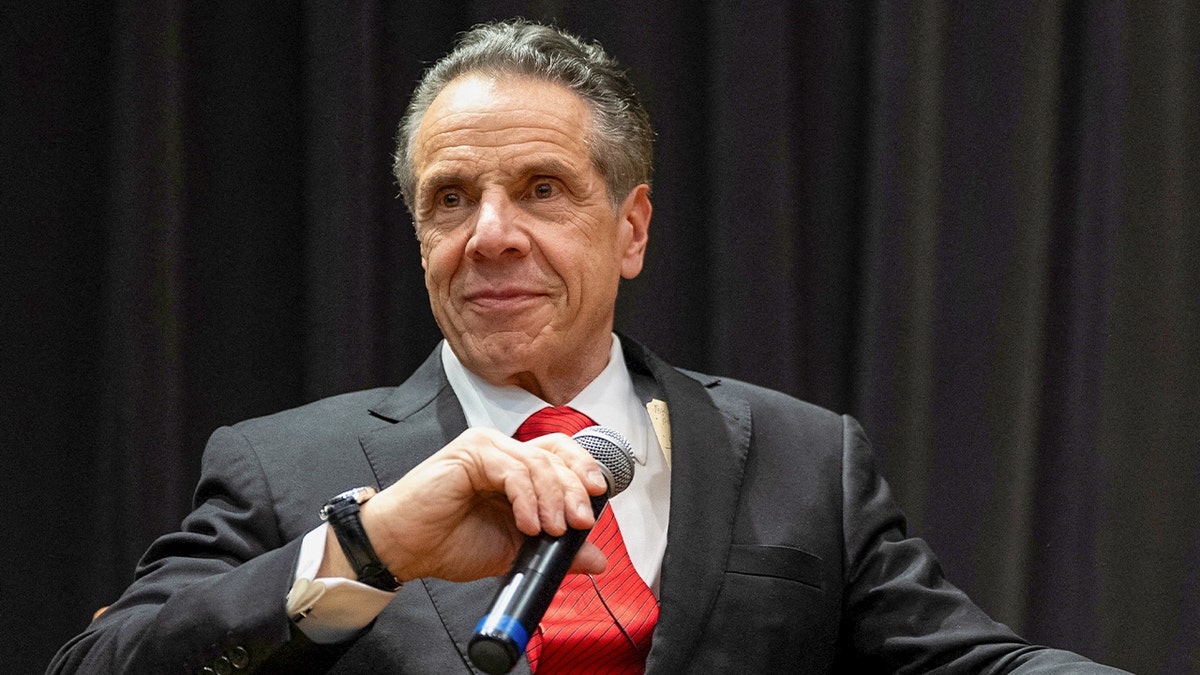INTERNACIONAL
Midterm elections are as unpredictable as ever, as 2026 looms

NEWYou can now listen to Fox News articles!
«Everything changes everything» – Late Baltimore Orioles’ Hall of Fame Manager Earl Weaver
Determining the political landscape for next year’s midterm elections may prove to be impossible.
At least right now.
Midterms have become increasingly challenging to decipher in recent cycles. A learned, Democratic Capitol Hill hand told me after the historic, 63-seat bloodletting by House Democrats in 2010 that the election was «un-modellable.»
Midterms are usually a problem for the party of the President.
NEW RNC CHAIR JOE GRUTERS VOWS TO ‘RIDE THE PRESIDENT ALL THE WAY TO VICTORY’ IN MIDTERMS
That said, Democrats only lost a few House seats in 1962 – immediately following the Cuban Missile Crisis – which nearly brought the U.S. and Soviet Union to nuclear blows.
Democrats lost a staggering 47 House seats in 1966 – the first and only midterm of late President Lyndon Johnson. But the electoral rapture barely dented the robust House majority. Democrats controlled 295 House seats before the 1966 midterms. 248 seats afterwards. Still a comfortable margin.
Very few political observers expected Democrats to lose control of the House in the legendary 1994 midterms – mainly because the party held the House for 40 consecutive years. It was nearly unthinkable that Democrats could lose the House – simply because it had not happened in decades. Democrats and other political observers excoriated the brilliant Michael Barone when he was the lone commentator to forecast that a Republican flip of the House could be in the offing come the fall of 1994.
Barone was right, as Republicans collected 54 seats.
Republicans nearly lost control of the House in the 1998 midterms – after they impeached former President Clinton. Republicans then bested the historic norms in 2002 and held the House, boosted by pro-GOP sentiment following 9/11.
Democrats managed to win back the House in 2018 – following a similar playbook they deployed in 2006 when they also captured control of the House. Democrats ran a number of moderate ex-military or «national security» Democrats – often in battleground districts. The relative unpopularity of President Donald Trump didn’t help Republicans, either.
Former House Speaker Kevin McCarthy, R-Calif., and former House Speaker Newt Gingrich, R-Ga., boasted that Republicans may capture anywhere from 40-60 seats in the 2022 midterms. Republicans did win the House – but barely.
CALIFORNIA REPUBLICANS SUE TO STOP NEWSOM, DEMOCRATS FROM PUSHING REDISTRICTING PLAN
Which brings us to 2026.
The party of the President historically loses around 25 seats in their first midterm. Since President Trump is only the second commander in chief to return to office after a hiatus (late President Grover Cleveland was the first), 2026 serves as a de facto «first midterm.» Trump and the Republicans lost 41 House seats in 2018 – his true first midterm. But calculating what to expect next year is nearly impossible.
Republicans now hold a 219 to 212 majority in the House with four vacancies. Three of those seats are solidly Democratic – for now. So for the sake of argument, let’s say the breakdown is 220 to 215. Democrats must only flip a net of three seats to claim the majority.
It’s not that easy.
First off, we barely understand the 2026 playing field.
In baseball, it’s 90 feet between the bases. 60 feet, 6 inches to the pitcher’s mound. Major League Baseball even standardized the size of the dirt infield a couple of years ago.
As we head to the playoffs, we know the Milwaukee Brewers and Detroit Tigers are excellent. The New York Mets and New York Yankees should be really good., but they’ve stumbled. The Philadelphia Phillies are excellent – but just lost starting pitcher Zack Wheeler to a major injury. Who could surprise down the stretch? The Cincinnati Reds and Kansas City Royals are hardly out of it. Everyone understands the general variables of Major League Baseball as October nears.
That is not the case with the 2026 midterms.
Texas Republicans are now determined to redraw Congressional districts to favor a GOP pickup of five seats. President Trump has endorsed similar efforts to tilt the field in favor of Republicans in GOP-strongholds like Missouri, Ohio and Indiana. California Gov. Gavin Newsom is threatening to upend the present maps in favor of Democrats in the Golden State. New York Democrats may try the same in the Empire State.
So, we don’t even know the basics. How far from the plate to the mound in the 2026 midterms? How large is the strike zone? Five balls for a walk or the standard four? Twelve players in the field or nine?
Redistricting could also hamper Republicans – forcing the party to suddenly defend a number of more competitive seats. Democrats could suddenly have more opportunities where none existed in 2024.
But we aren’t sure.
Maybe everything is status quo and Democrats only need to flip those three seats.
We also don’t know how the relative unpopularity of President Trump may impact voters. He historically defies political gravity. Plus, the Democratic brand remains utterly toxic. Party registration is down for the Democrats – big time.
POLITICAL ANALYST SAYS DEMOCRATS ARE ALREADY WORRIED ABOUT THE ‘BIG PROBLEM’ OF WINNING BACK VOTERS FOR 2028
That said, could Republicans reap the benefits of passing the hallmark of their legislative agenda – the One, Big, Beautiful Bill? Some conservatives doubt that the GOP has sufficiently sold the public on that legislation, especially during the August recess. Democrats are banking on the possibility that the legislation will backfire on the GOP in next year’s midterms. We also don’t know if President Trump not being on the ballot in 2026 is similar to the Republican midterm performance in 2018. It’s clear that not having Mr. Trump on the ballot in 2018 undercut the party at the polls.
Republicans could also face a backlash from moderates and swing voters if they are dissatisfied with the performance of the President. We certainly saw that after voters tired of the polices of former Presidents George H.W. Bush in 1990, Bill Clinton in 1994, George W. Bush in 2006 and Barack Obama in 2010.
And, we have an entire 15 months before voters head to the polls next year. There could be another foreign policy crisis involving the Middle East. Tensions with Russia over Ukraine are volatile. There are host of potential events – ranging from health policy to the economy which could set the table for the midterms.
Lots to consider.
It’s all in play.
CLICK HERE TO GET THE FOX NEWS APP
«Everything changes everything,» observed the sage Earl Weaver.
Or perhaps we should turn to New York Yankees legend Yogi Berra:
«In baseball, you don’t know nothing.»
politics,midterm elections,house of representatives politics
INTERNACIONAL
Evergrande: este es el fin de la otrora más poderosa empresa inmobiliaria de China

El momento pasó sin pena ni gloria. China Evergrande, una promotora inmobiliaria que alguna vez representó la cumbre del poderío económico de China, fue formalmente eliminada de la Bolsa de Hong Kong el lunes.
Evergrande, que hizo su debut financiero en Hong Kong hace 16 años, había sido en un momento la promotora inmobiliaria de más rápido crecimiento en un país rebosante de promesas de ganancias para los inversores. Será recordada como una de las empresas más endeudadas del mundo, cuyo colapso llevó al sistema financiero de China al límite.
La empresa puso a prueba la antigua política de Beijing de «demasiado grande para quebrar» hacia sus compañías más grandes. Rompió su tolerancia al endeudamiento descontrolado por parte de corporaciones gigantes. Y el colapso de Evergrande en 2021, con más de $300 mil millones en deuda, expuso las vulnerabilidades de la economía de China y su dependencia del sector inmobiliario como motor de crecimiento.
Ahora lo que queda es el esqueleto de un gigante corporativo: 1.300 proyectos inmobiliarios aún sin terminar en más de 280 ciudades y cientos de miles de compradores de viviendas que siguen esperando sus departamentos.
Luego está la larga fila de acreedores, desde empresas en China que trabajaban para Evergrande hasta inversores en Londres y Nueva York que apostaron por ella, que aún esperan ser reembolsados.
El año pasado, un juez de Hong Kong ordenó que Evergrande fuera desmantelada. Designó a Alvarez & Marsal, una firma que se especializa en quiebras y que una vez ayudó a disolver a Lehman Brothers, para que se encargara de la tarea.
Un año y medio después de comenzar el trabajo, los liquidadores, dos ejecutivos de Alvarez & Marsal, han dado pequeños pasos para ayudar a los acreedores extranjeros a obtener pequeñas porciones de lo que se les debe.
Los últimos documentos divulgados públicamente por Evergrande demuestran los desafíos.
Los acreedores han realizado cientos de acciones legales contra los proyectos de Evergrande en China y docenas de activos han sido congelados. En algunos casos, los inversores o los gobiernos locales se han hecho cargo de las promociones. Ya es difícil para los liquidadores de Hong Kong recuperar activos para otros acreedores debido a la compleja estructura empresarial de Evergrande con miles de filiales.
Para extraer dinero de lo que queda de Evergrande, los liquidadores tienen que hacerse cargo de cada filial una por una. Alvarez & Marsal ha tomado hasta ahora el control de más de 100 empresas y activos por un valor de alrededor de $3.5 mil millones.
Pero solo se han conseguido alrededor de $255 millones de los $45 mil millones que los acreedores en Hong Kong afirman que se les debe. Y los liquidadores han advertido que incluso el valor de algunos de los activos incautados está en duda, lo que genera «serias dudas sobre las cantidades, si las hay, que en última instancia se puedan obtener en beneficio de los acreedores de la empresa».
Los liquidadores están siguiendo otra vía legal para tratar de extraer dinero de Evergrande: ir tras el expresidente, Hui Ka Yan, su esposa, Ding Yu Mei, y el ex director ejecutivo de Evergrande, Xia Haijun.
Un caso que tiene lugar en Hong Kong, con audiencias a puerta cerrada, ha puesto en la mira activos por valor de $6 mil millones que Hui y otros ejecutivos se pagaron a sí mismos en los años posteriores a la salida a bolsa de Evergrande en Hong Kong.
Es un estudio del exceso de una época pasada en la que la industria inmobiliaria china era más libre. Hasta ahora, el caso se ha centrado principalmente en la esposa de Hui y en Xia. Hui fue detenido en 2023 y las autoridades lo han multado desde entonces con $6.5 millones y lo han acusado de «organizar un fraude».
Una presentación judicial reciente afirmó que Xia, quien fue multado con $2 millones y vetado de los mercados financieros por un importante regulador chino por fraude de valores, está ocultando activos por valor de $24 millones en varias casas y coches de lujo en California.
Una de esas propiedades, en Irvine, tiene un valor de $6.3 millones y fue comprada en abril de 2022, un mes después de que Evergrande retrasara repentinamente sus resultados anuales de 2021 y dijera que los bancos habían incautado préstamos por valor de $2 mil millones, según muestran los documentos judiciales. Varios meses después, Xia renunció por lo que la empresa dijo que había sido un plan para desviar $2 mil millones a una de sus empresas cotizadas en Hong Kong desde una filial.
Apenas unos meses antes de que Xia fuera multado en marzo de 2024, su esposa gastó $14.5 millones en una enorme mansión en Newport Beach, California, según los documentos judiciales. Él ha declarado ante el tribunal que no posee nada que valga más de $6.400.
c.2025 The New York Times Company
INTERNACIONAL
Cuomo calls NYC mayoral rival ‘dangerous,’ warns socialism would be ‘death knell’ for city

NEWYou can now listen to Fox News articles!
Zohran Mamdani is «dangerous,» and socialism would be a «death knell for New York City,» former Gov. Andrew Cuomo told Fox News’ Maria Bartiromo on «Sunday Morning Futures.»
The leading mayoral candidates represent the political divide that has been brewing in the Democratic Party since President Donald Trump reclaimed the White House last year.
Cuomo said this «internal debate» should come as «no surprise,» tying Mamdani to fellow self-described democratic socialists, Rep. Alexandria Ocasio-Cortez, D-N.Y., and Sen. Bernie Sanders, I-Vt., both of whom have endorsed Mamdani’s campaign.
«The primaries get the most active, often on the Democratic side, the most far-left people to come out to vote, and he mobilized the 20- to 30-year-olds, the socialists. The socialist organizations across the country sent volunteers, sent funding,» Cuomo said, rationalizing Mamdani’s Democratic primary win.
NYC OFFICIAL WARNS BUSINESSES WILL FLEE ‘IN DROVES’ IF DEMOCRATIC SOCIALIST CANDIDATE WINS MAYORAL RACE
Former Gov. Andrew Cuomo on Capitol Hill on June 11, 2024, in Washington, D.C. (Al Drago/Getty Images)
The former governor, who is running as an independent candidate after losing to Mamdani in June, said the general election electorate is «much different.»
CITY-RUN GROCERY STORES, DEFUNDING POLICE, SAFE INJECTION SITES: WHAT TO KNOW ABOUT NYC’S NEXT POTENTIAL MAYOR
«New York City people are not socialists,» Cuomo said. «They’re not anti-business people. They’re not anti-corporate people. They want jobs. They want growth.»
«It’s antithetical to New York City to be anti-corporate,» Cuomo said on Fox News on Sunday, criticizing Mamdani and his fellow «socialists» who believe in government freebies, taxing the rich and seizing the means of production.
New York City was «built on capitalism,» Cuomo said.

New York City Democratic mayoral nominee Zohran Mamdani spoke to supporters at a canvass launch event in Prospect Park on Aug. 17, 2025. (Deirdre Heavey/Fox News Digital)
Mamdani plans to pay for his ambitious policy agenda, which includes free buses, no-cost healthcare and city-run grocery stores, by raising taxes on the 1% and corporations.
His plan includes raising the corporate tax rate to 11.5% and taxing the wealthiest 1% of New Yorkers 2%, according to Mamdani’s campaign website.
«New York City corporations are already high-taxed, as are the individuals,» Cuomo said. «I think it would be a death knell for New York City, and he is dangerous, frankly, for New York City.»
Meanwhile, Cuomo explained that his «pro-growth development strategy» focuses on attracting and building businesses and is central to Cuomo’s campaign.

Former Gov. Andrew Cuomo relaunched his New York City mayoral campaign as an independent candidate. (REUTERS/David ‘Dee’ Delgado)
«Too many businesses, as you know, have moved out of New York. So, number one, get more businesses here and grow the businesses that are here,» Cuomo explained.
A Bloomberg study found that 158 companies managing $993 billion in assets moved their headquarters out of New York between 2020 and 2023.
In addition to building businesses in New York City, Cuomo said he is focused on public safety and affordable housing.
«Crime is a real problem in New York City as it is in cities across the country, and New York City exacerbated it. A few years ago, the socialists went through this ‘defund the police,’ this anti-police movement,» Cuomo said.
CLICK HERE TO GET THE FOX NEWS APP
According to Cuomo’s campaign website, the former governor wants to add 5,000 new police officers to the New York Police Department (NYPD). He told Fox News that he plans to add 1,500 officers to the patrol subways.
And to provide more affordable housing, Cuomo said he plans to add 50,000 new units per year, which will «add to the supply and meet the demand.»
Fox News Digital reached out to Mamdani for a response to Cuomo’s comments but did not immediately hear back.
2025 2026 elections coverage,politics,new york city,elections,andrew cuomo
INTERNACIONAL
Computación cuántica modular: cómo funciona el sistema que promete crecer pieza por pieza

Un equipo de científicos en la Universidad de Illinois Urbana-Champaign encontró una manera de conectar piezas de computadoras cuánticas como si fueran bloques de Lego. La idea es similar a cuando, en los años noventa, se armaban computadoras personales pieza por pieza: se compraba un procesador, una tarjeta gráfica, un disco rígido y, al ensamblarlos, se lograba una máquina más potente.
De acuerdo con un artículo publicado en Nature Electronics, el equipo desarrolló una propuesta técnica que busca que los ordenadores cuánticos sean escalables y reconfigurables. En lugar de apostar por un solo bloque grande, cada módulo contiene sus propios cúbits superconductores y puede conectarse a otros mediante cables desmontables. “La arquitectura modular permite superar este desafío mediante un ensamblaje tipo Lego, reconfiguración y expansión, en un espíritu similar al de los ordenadores clásicos modernos”, concluyen los responsables de la investigación citados por la revista.
El sistema utiliza un cable coaxial superconductor como “bus cuántico”, que no solo une los módulos, sino que logra transmitir excitaciones y crear entrelazamiento entre los cúbits de distintas partes. El equipo liderado por Michael Mollenhauer y Wolfgang Pfaff alcanzó puertas SWAP entre módulos con un “1 % de pérdida en menos de 100 ns”. Esta marca resulta decisiva porque logra el rango de error mínimo necesario para que la corrección cuántica funcione y los códigos puedan ejecutarse de forma eficiente.
La propuesta quiere atacar el mayor obstáculo en el sector: pasar de prototipos pequeños a sistemas con millones de cúbits. Los ordenadores tradicionales fabricados en un solo chip resultan difíciles de ampliar y sus operaciones pierden fidelidad a medida que crecen. Los investigadores afirman que su modularidad permitiría ampliar los sistemas al agregar nuevas piezas ya probadas, optimizando el rendimiento sin que dependa de que cada elemento sea perfecto. “El rendimiento global de la máquina no dependerá de que todos los componentes sean perfectos, sino de la capacidad de integrarlos de forma eficiente”, detalla el artículo de Nature Electronics.

Otro logro relevante fue la demostración de que los cúbits de diferentes módulos pueden alcanzar una fidelidad en el entrelazamiento del 97,4 %. Este dato sitúa la propuesta cerca de la fiabilidad de los sistemas de un solo chip y elimina la distancia física como impedimento insalvable. El sistema también posibilita que el cable se quede desmontado y vuelva a conectarse sin que la calidad caiga de manera significativa.
El texto destaca que la filosofía modular devuelve a la computación cuántica una flexibilidad ya habitual en los viejos ordenadores clónicos. Según Pfaff, “la idea es poder construir un sistema que se pueda montar, desmontar y volver a montar, manteniendo al mismo tiempo operaciones de muy alta calidad”. El enfoque permite probar los módulos por separado, detectar fallos antes de integrarlos y efectuar reemplazos sin iniciar el proceso desde cero. Además, los módulos cuánticos se pueden fabricar y testear individualmente, como se hacía con las tarjetas gráficas y discos duros en los años noventa, para luego conectar únicamente aquellos que pasan las más duras pruebas de fidelidad.
La modularidad significa también que el usuario podrá construir redes cuánticas distribuidas. Los científicos aseguran que el nuevo esquema hace posible “la generación de entrelazamiento de alta fidelidad y la operación de un cúbit lógico distribuido”. Varios módulos podrían colaborar como si fueran un único procesador lógico, repartiéndose cálculos complejos entre diferentes unidades.
No todo está resuelto. Según precisaron los autores del proyecto, el conector necesita mejorar para no comprometer la coherencia de los cúbits. Las pruebas actuales indican que esos tiempos —el lapso durante el cual un cúbit mantiene su estado cuántico— son algo menores que en dispositivos convencionales sin cables desmontables. Sin embargo, los experimentos muestran un sistema robusto y capaz de soportar varios ciclos de ensamblaje y desensamblaje sin grandes pérdidas de calidad.

Esta arquitectura tampoco limita la compatibilidad a una sola clase de cúbits. Según la investigación, “nuestro interconector no requiere elementos de circuito adicionales más allá de la no linealidad intrínseca de los cúbits, lo que lo hace aplicable también a otros tipos”. Así, el sistema podría adaptarse a innovaciones como los cúbits fluxonium y a máquinas híbridas.
El plan para el futuro inmediato contempla conectar más de dos módulos y mantener la detección de errores y la posibilidad de ampliar el procesador pieza a pieza. El equipo de Illinois proyecta construir procesadores distribuidos capaces de sumar capacidad sin límites, acercando a la tecnología cuántica a la idea de un ordenador competitivo y personalizable como los clónicos que impulsaron la revolución informática de los años noventa.
computación cuántica

 DEPORTE2 días ago
DEPORTE2 días agoChile organizó una colecta para que la familia del hincha que fue operado por fractura de cráneo pueda viajar a la Argentina

 CHIMENTOS3 días ago
CHIMENTOS3 días agoConfirmado: Susana Giménez vuelve con un programa de los más esperados

 DEPORTE2 días ago
DEPORTE2 días agoEl fútbol chileno se solidarizó con la U tras los graves incidentes que se registraron ante Independiente

























